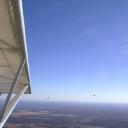Yahoo Answers is shutting down on May 4th, 2021 (Eastern Time) and beginning April 20th, 2021 (Eastern Time) the Yahoo Answers website will be in read-only mode. There will be no changes to other Yahoo properties or services, or your Yahoo account. You can find more information about the Yahoo Answers shutdown and how to download your data on this help page.
Trending News
if the titanic hit the iceberg trait on would it have sunk?
6 Answers
- Michel VerheugheLv 78 years agoFavorite Answer
I have worked five years as a yacht designer and 32 years for maritime training and I agree with TQ, nobody on this forum has enough engineer knowledge to know the answer, and perhaps no one knows.
Some people suggest that a front collision would have avoided the sinking. This is because, when doing an avoidance manoeuvre, the ship got a leak along a long part of the hull, as the submerged part of the iceberg tore it alongside. A straight forward hit would have caused more damage to the bow but perhaps not enough to get water over the bulkheads as it did.
One interesting trivia is that, in the movie, when the watch keepers called for iceberg, the officer of the bridge gave the instruction: "Hard to starboard" to the helmsman. Some people reacted, saying that the manoeuvre was to port side and not starboard as, indeed, the helmsman turned the wheel counter-clockwise, to port side.
However, the movie from 1997 is historically correct: in 1912, when the Titanic sank, the instructions were still as meant for a tiller type of steering. Yes, with a tiller, you push it to starboard to turn to port side! The practice changed shortly after.
Historically correct is also the fact that the Titanic sent first the morse signal CQD, which stands for: Seek you, distress. The problem is that the morse signal dadidadit dadaditat dadidit is not very distinctive from other morse signals. Prior to that, the international maritime organization had decided to use another signal that is much easier to get: didididadadadididit, which is now known as SOS. The Titanic was indeed, the first vessel in the world to use it. It is worth saying that SOS is only a representation of the signal and not those three separate letters but rather, a succession of three short, three long and three short signals.
Also worth mentioning is that the Titanic disaster was the cause for the SOLAS convention being internationally accepted two years later. Today, it is the IMO that is responsible for keeping this convention up-to-date to successive amendments and this is exactly what I am professionally teaching for the past decades.
- 8 years ago
IF the titanic hit the iceberg straight on, there is a big chance it would have sunk. In 1912, it skimmed across the ship, flooding it. There would be more impact. If you remember the movie, the captain tried to steer away and at the same time he slowed down. To answer your question, yes, the Titanic would still sink due to water constantly entering the ship in the bow(or stern), leading it to break in half and sinking as two pieces
Source(s): Titanic the movie, logic - Anonymous8 years ago
Yes, it still would have sunk. An iceberg is not straight and smooth. It has jagged areas. The Titanic struck an iceberg which tore the hull and allowed water to flow in.
Source(s): Storm spotter/chaser - TQLv 78 years ago
Short answer:
Engineering experts disagree about what effect there may have been if the Titanic struck the iceberg straight on.
Longer answer:
No one posting to this forum is an engineering expert.
- How do you think about the answers? You can sign in to vote the answer.
- Cindy2Lv 58 years ago
Scientists have analyzed pieces of the ship. Other factors also contributed to its sinking such as inferior substandard metal used during its construction according to articles I've read.






